
Super Mario Bros. 3 is a 1988 platform game developed and published by Nintendo for the Nintendo Entertainment System (NES). It was released for home consoles in Japan on October 23, 1988, in North America on February 12, 1990 and in Europe on August 29, 1991. It was developed by Nintendo Entertainment Analysis and Development, led by Shigeru Miyamoto and Takashi Tezuka.

Super Mario World, known in Japanese marketing as Super Mario World: Super Mario Bros. 4, is a platform game developed by Nintendo EAD and published by Nintendo for the Super Nintendo Entertainment System (SNES). It was released in Japan in 1990, North America in 1991 and Europe and Australia in 1992. The player controls Mario on his quest to save Princess Peach and Dinosaur Land from the series' antagonist Bowser and the Koopalings. The gameplay is similar to that of earlier Super Mario games; players control Mario through a series of levels in which the goal is to reach the goalpost at the end.

Super Mario Bros. 2 is a platform game developed and published by Nintendo for the Nintendo Entertainment System. It was first released in North America in September 1988, and in the PAL region in 1989.

Super Castlevania IV is a platform video game developed and published by Konami for the Super Nintendo Entertainment System. It has been re-released multiple times, including for the Super NES Classic Edition.
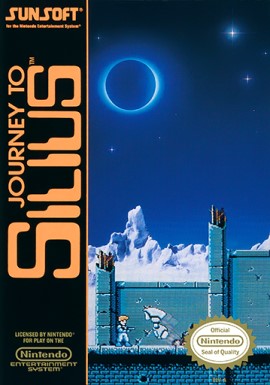
Journey to Silius, known in Japan as Rough World, is a side-scrolling run and gun video game developed and published by Sunsoft for the Nintendo Entertainment System in 1990.

Jack Bros. is an action video game developed and published by Atlus for the Virtual Boy, released in late 1995 in Japan and North America. It is a spin-off from Atlus' video game series Megami Tensei, and was the first entry to be released outside Japan.
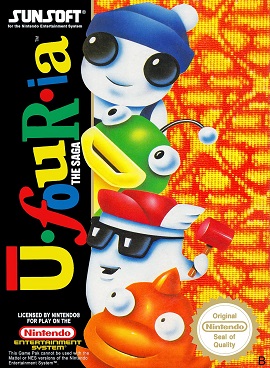
Ufouria: The Saga is a 1991 action-adventure video game developed and published in Japan and Europe by Sunsoft for the Nintendo Entertainment System. It is the first entry in the Hebereke franchise, where almost every installment in the series features a completely different playstyle. Controlling a humanoid-looking character called Bop-Louie through an interconnected world, the game focuses on exploration and searching for items and power-ups in vein of Metroid and Blaster Master, fighting bosses and minibosses. During gameplay, the player locates the main character's three friends, each of which becomes a playable character and have unique skills that allow the player to reach previously inaccessible areas.

The Bugs Bunny Birthday Blowout, known in Japan and on the title screen as Happy Birthday Bugs (ハッピーバースディ・バッグス) and in Europe as The Bugs Bunny Blowout, is a platform video game developed and published by Kemco for the Nintendo Entertainment System in 1990.

Batman: Return of the Joker is a 1991 platform video game, the follow-up to Sunsoft's first Batman game on the Nintendo Entertainment System. Unlike that game, which was based on the 1989 Batman film directed by Tim Burton, Return of the Joker is entirely self-contained and based more on the modern comic book iteration of Batman, but the Batmobile and the Batwing are featured from the 1989 film. A remake of Return of the Joker, titled Batman: Revenge of the Joker, was released on the Sega Genesis by Ringler Studios in 1992. A Super NES version of Revenge of the Joker was completed but never officially released; a ROM image surfaced online in later years.
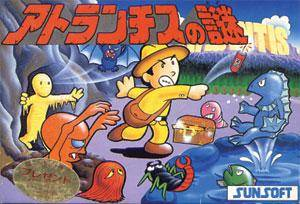
Atlantis no Nazo is a side-scrolling platform video game developed and published by Sunsoft and released for the Family Computer in 1986.
A side-scrolling video game is a game viewed from a side-view camera angle where the screen follows the player as they move left or right. The jump from single-screen or flip-screen graphics to scrolling graphics during the golden age of arcade games was a pivotal leap in game design, comparable to the move to 3D graphics during the fifth generation.
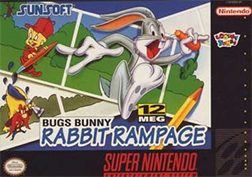
Bugs Bunny Rabbit Rampage is an action video game developed by Viacom New Media and published by Sunsoft released exclusively for the SNES in 1994. The player controls Bugs Bunny as he fights traditional Looney Tunes villains in order to confront the main villain of the story, animator Daffy Duck. The game's title is derived from the 1955 animated short with the same name, which follows a similar plot of Bugs at the mercy of an antagonistic animator, revealed to be Elmer Fudd. The characters in the game were voiced by Greg Burson.

Road Runner's Death Valley Rally is a 1992 video game developed by ICOM Simulations and published by Sunsoft for the Super Nintendo Entertainment System. It is based on the Looney Tunes characters Wile E. Coyote and the Road Runner.

Hebereke's Popoon is a two player puzzle video game developed and published by Sunsoft. It is based on the Hebereke series. Hebereke means drunk or untrustworthy. Popoon is an onomatopoeia for the sound made by the game pieces when they explode.

Trip World is a 1992 platform game developed and published by Sunsoft for the Game Boy. It was released in Japan in 1992, and in Europe the following year. The game's plot centers around the bunny-like being Yakopoo and his quest to retrieve the flower of peace so that peace will return to his disarranged world. The protagonist's trademark ability is to shapeshift into different forms.

Todd McFarlane's Spawn: The Video Game is a video game based on the Spawn comic book character. It was released in the United States and Europe for the Super Nintendo Entertainment System console. Developed by Ukiyotei and published by Acclaim Entertainment and Sony Electronic Publishing in late 1995, it features Al Simmons, Spawn, trying to save the lives of thirteen children in a beat 'em up type of video game. The game received mixed reviews by critics; the graphics were praised while the unoriginality of the game was criticized.

New Super Mario Bros. Wii is a 2009 platform game developed and published by Nintendo for the Wii. A follow-up to New Super Mario Bros., it was first released in Australia, North America, and Europe in November 2009, followed by Japan a month later. A high-definition port for the Nvidia Shield TV was released in China in December 2017. Like other side-scrolling Super Mario games, the player controls Mario as he travels eight worlds and fights Bowser's henchmen to rescue Princess Peach. New Super Mario Bros. Wii was the first Super Mario game to feature simultaneous cooperative multiplayer gameplay; up to four people can play in cooperative and competitive multiplayer modes, taking control of Mario as well as Luigi and one of two multicolored Toads. The game also introduced "Super Guide", which allows the player to watch a computer-controlled character complete a level.

Super Mario All-Stars is a 1993 compilation of platform games for the Super Nintendo Entertainment System (SNES). It contains remakes of Nintendo's four Super Mario games released for the Nintendo Entertainment System (NES) and the Famicom Disk System: Super Mario Bros. (1985), Super Mario Bros.: The Lost Levels (1986), Super Mario Bros. 2 (1988), and Super Mario Bros. 3 (1988). As in the original games, players control the Italian plumber Mario and his brother Luigi through themed worlds, collecting power-ups, avoiding obstacles, and finding secrets. The remakes feature updated graphics—including the addition of parallax scrolling—and music, modified game physics, a save feature, and bug fixes.
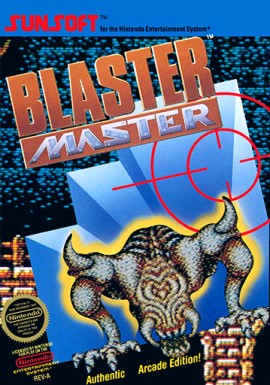
Blaster Master is a platform and run and gun video game released by Sunsoft for the Nintendo Entertainment System. It is a localized version of a Japanese Famicom game titled Chō Wakusei Senki Metafight, which was released on June 17, 1988. The game was released in North America in November 1988 and in Europe on April 25, 1991. The game is the first in the Blaster Master series, and it spawned two spin-off games as well as two sequels.

Looney Tunes is a platform video game developed and published by Sunsoft released for Game Boy in 1992. The game was re-released for Game Boy Color seven years later.




















